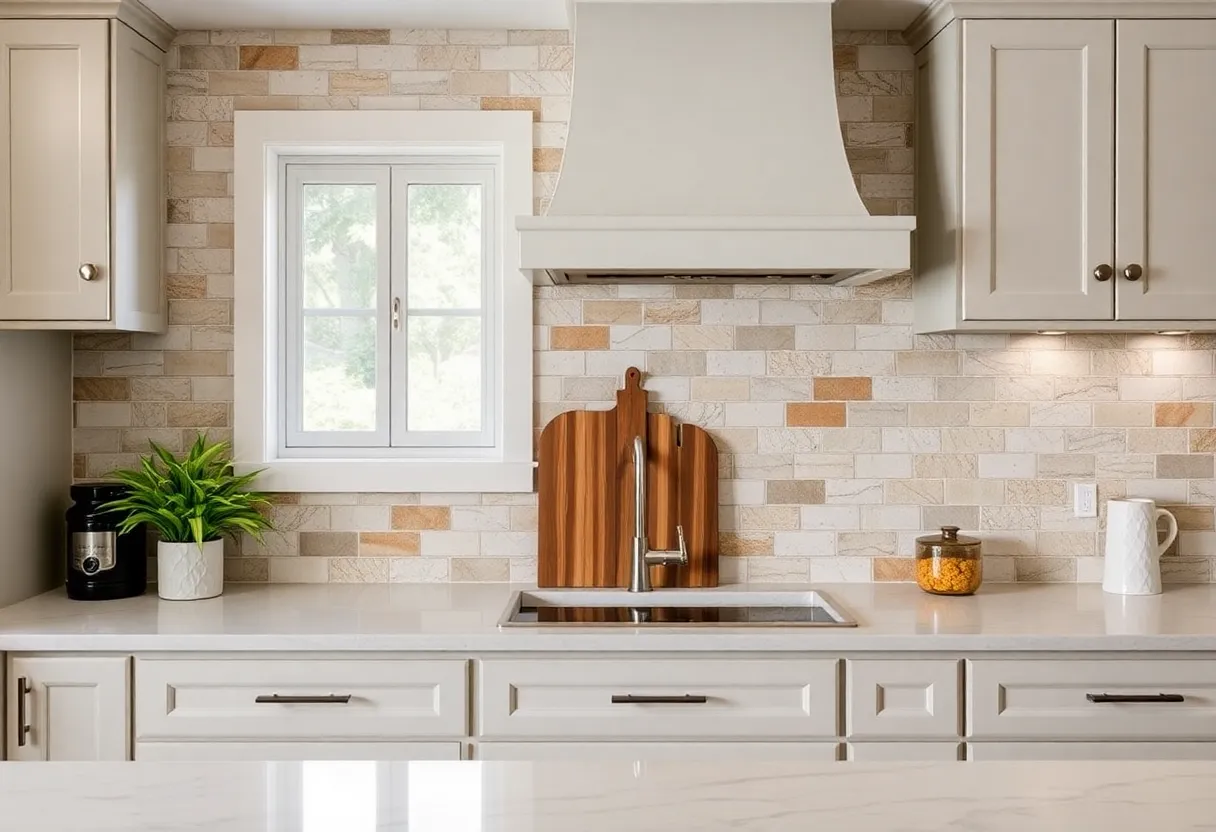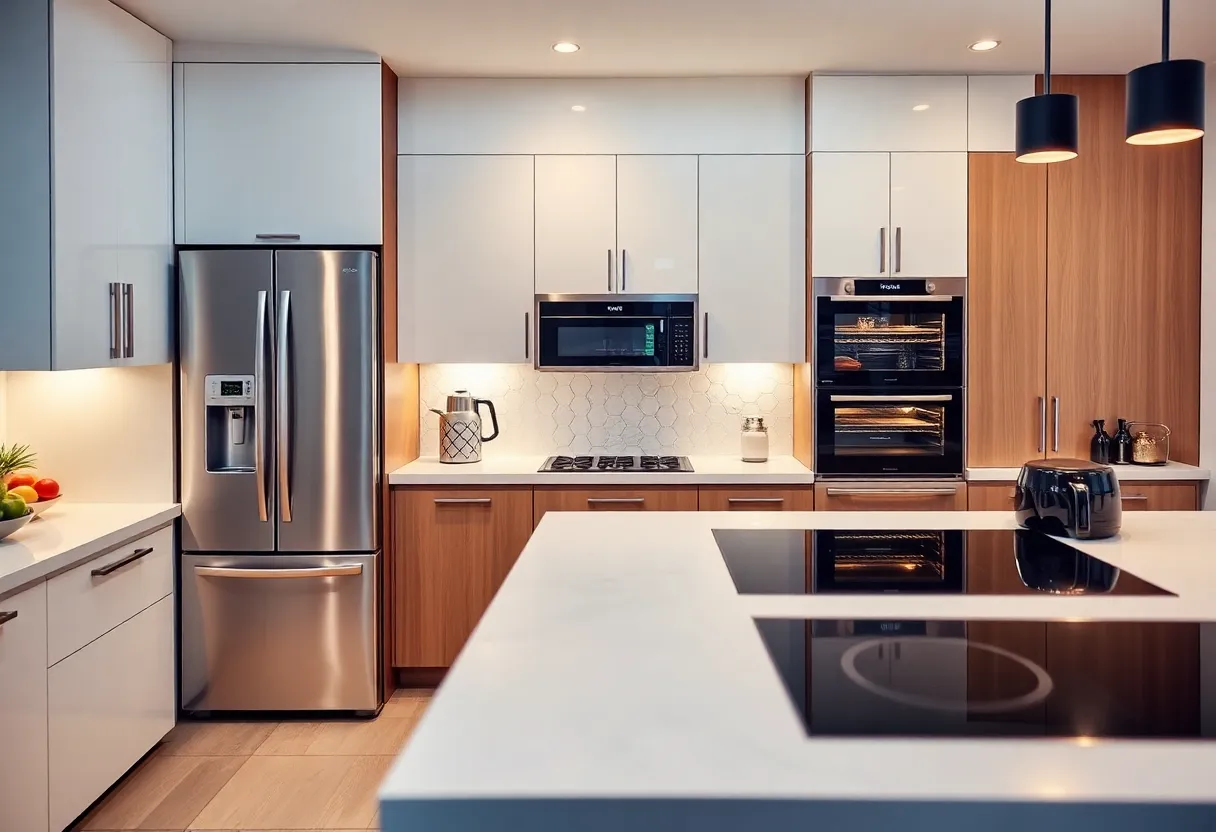Choosing the right kitchen cabinets is a significant decision that can greatly influence the look, functionality, and value of your home. The process can be daunting due to the numerous options available, but with the right guidance, you can make informed choices that suit your style and needs. This comprehensive guide will help you understand the various aspects of selecting kitchen cabinets, from identifying your kitchen’s style to practical tips for installation and maintenance.
Understanding Your Kitchen’s Style
Traditional Style
Traditional kitchens often feature classic design elements like raised panel doors, intricate moldings, and a warm, inviting ambiance. These kitchens exude a timeless appeal, often utilizing materials such as wood with rich finishes. Traditional cabinets might incorporate decorative details like corbels and crown molding. This style is perfect for homeowners who appreciate a more formal, elegant look.
Key Characteristics:
- Raised panel doors
- Warm wood finishes like cherry or oak
- Decorative elements like corbels and moldings
- Classic hardware styles
Modern Style
Modern kitchens prioritize clean lines, minimalistic designs, and functionality. This style often features sleek, frameless cabinets with flat surfaces and minimal ornamentation. High-gloss finishes, stainless steel, and glass are common materials. Modern kitchens are ideal for those who prefer a streamlined, contemporary look that emphasizes simplicity and efficiency.
Key Characteristics:
- Flat panel or slab doors
- High-gloss or matte finishes
- Minimalistic hardware
- Use of glass and stainless steel
Transitional Style
Transitional kitchens blend elements from both traditional and modern styles, creating a balanced and versatile design. This style often features shaker-style cabinets, which are simple yet elegant. Transitional kitchens can adapt to various tastes and preferences, making them appealing to a broad audience.
Key Characteristics:
- Shaker-style doors
- Neutral color palettes
- Mix of traditional and modern elements
- Versatile design suitable for many preferences
Rustic Style
Rustic kitchens embrace natural materials, earthy tones, and a cozy atmosphere. They often feature distressed wood finishes and hand-crafted elements. This style is perfect for creating a warm, inviting kitchen that feels homey and comfortable.
Key Characteristics:
- Distressed or reclaimed wood
- Natural, earthy colors
- Hand-crafted details
- Cozy and inviting ambiance
Choosing the Right Cabinet Types for Your Needs
Base Cabinets
Base cabinets are the foundation of kitchen storage, providing essential support for countertops and ample storage space underneath. These cabinets are crucial for storing heavy items like pots, pans, and small appliances.
Features:
- Standard height and depth
- Often include drawers and pull-out shelves
- Provide structural support for countertops
Wall Cabinets
Wall cabinets are mounted on the wall and offer additional storage without taking up floor space. These cabinets are ideal for storing lighter items such as dishes, glasses, and pantry goods. They help maximize vertical space in the kitchen.
Features:
- Mounted above countertops
- Various heights to suit different ceilings
- Can include glass fronts for display purposes
Tall Cabinets
Tall cabinets, or pantry cabinets, extend from the floor to the ceiling, providing extensive storage space. These are perfect for pantry items, brooms, or even built-in appliances like ovens or microwaves.
Features:
- Full-height storage solution
- Ideal for pantries or utility storage
- Can house built-in appliances
Specialty Cabinets
Specialty cabinets include corner cabinets, pull-out pantries, and other unique storage solutions designed to maximize efficiency and accessibility in the kitchen. These cabinets help utilize otherwise wasted space and improve organization.
Features:
- Designed for specific storage needs
- Includes pull-out shelves, lazy Susans, and corner solutions
- Enhances kitchen functionality
Selecting Materials and Finishes
Wood
Wood is a popular choice for kitchen cabinets due to its warmth and versatility. Common types of wood used for cabinets include oak, cherry, maple, and hickory. Each type of wood offers unique grain patterns and color variations.
Pros:
- Warm and natural appearance
- Durable and long-lasting
- Can be stained or painted in various colors
Cons:
- Can be expensive
- Requires regular maintenance to prevent damage from moisture and pests
MDF (Medium-Density Fiberboard)
MDF is an economical choice known for its smooth, uniform surface. It is often used for painted finishes and can be crafted into various styles.
Pros:
- Smooth surface ideal for painting
- Cost-effective
- Resistant to cracking and warping
Cons:
- Less durable than solid wood
- Susceptible to moisture damage if not properly sealed
Laminate
Laminate cabinets are durable and easy to clean, making them a practical choice for busy kitchens. They are available in a wide range of colors and designs, including options that mimic wood grain.
Pros:
- Durable and easy to maintain
- Wide variety of colors and designs
- Budget-friendly
Cons:
- Less elegant than real wood
- Edges can peel over time
Metal
Metal cabinets offer a sleek, modern look and are ideal for contemporary kitchens. Stainless steel is a popular choice, known for its durability and hygienic properties.
Pros:
- Sleek and modern appearance
- Extremely durable and resistant to damage
- Easy to clean and maintain
Cons:
- Can be expensive
- Prone to showing fingerprints and smudges
Balancing Quality and Budget
Quality vs. Cost
Investing in high-quality cabinets can enhance your kitchen’s functionality and longevity. However, it’s essential to balance quality with budget constraints. High-end cabinets are typically made from better materials and feature superior construction techniques, but they come at a higher cost.
Budget-Friendly Options
If custom cabinets are out of your budget, consider semi-custom or stock cabinets. Semi-custom cabinets offer some customization options while being more affordable than fully custom cabinets. Stock cabinets are the most budget-friendly option and are available in standard sizes and finishes.
Long-Term Value
Well-made cabinets are a long-term investment that will enhance your home’s overall value. Spending a bit more upfront on quality cabinets can save you money in the long run by reducing the need for repairs and replacements.
Functional Design Considerations
Maximizing Storage
Efficient storage solutions are key to a functional kitchen. Consider incorporating pull-out shelves, deep drawers, and vertical storage solutions to keep your kitchen organized and accessible. These features help maximize the available space and make it easier to find and reach items.
Appliance Integration
Plan your cabinets around your appliances to ensure a seamless and functional kitchen design. Built-in charging stations, appliance garages, and proper spacing for large appliances can enhance the efficiency of your kitchen.
Ergonomics
Ergonomic design is essential for making your kitchen comfortable and easy to use. Ensure that cabinets are at the right height and depth to avoid strain. Features like soft-close drawers and pull-out shelves can improve accessibility and convenience.
Color and Finish Selection
Cohesive Color Palette
Choose a color palette that complements your kitchen’s overall design. Cabinets should harmonize with the countertops, flooring, and walls. A cohesive color scheme creates a unified and aesthetically pleasing look.
Popular Finishes
Popular finishes for kitchen cabinets include stained wood, painted finishes, and natural wood grain. Each finish offers a different look and feel, so choose one that aligns with your style preferences.
Accent Features
Incorporate accent features like glass fronts, decorative hardware, and unique finishes to add character to your kitchen. These elements can create focal points and enhance the overall design.
Practical Tips for Installation and Maintenance
Professional vs. DIY Installation
Decide whether to hire professionals or do it yourself. Professional installation ensures precision and can save you time and effort, but it comes at a higher cost. DIY installation can save money if you have the necessary skills and tools.
Maintenance Tips
Proper maintenance can prolong the life of your cabinets. Regular cleaning with mild soap and water, avoiding harsh chemicals, and promptly addressing any damage can help maintain the appearance and functionality of your cabinets.
Long-Term Care
Long-term care involves regularly checking for and fixing any wear and tear. Keeping cabinets clean and dry, and avoiding excessive moisture and heat can prevent damage and extend their lifespan.
Choosing the right kitchen cabinets involves careful consideration of style, functionality, materials, and budget. Whether you’re in Novi, Northville, Plymouth and Ann Arbor, our kitchen remodeling contractors provide expert advice and renovation services to guide you through every step of the process. By understanding your kitchen’s style, selecting the appropriate cabinet types, and considering practical aspects like storage and ergonomics, you can create a kitchen that is both beautiful and functional. Investing in quality cabinets and maintaining them properly will ensure that your kitchen remains a welcoming and efficient space for years to come. Contact us today for a free estimate.
FAQs
What are the best materials for kitchen cabinets?
- The best materials for kitchen cabinets include wood, MDF, laminate, and metal. Each material has its advantages and disadvantages, so choose based on your budget, style preference, and usage needs.
How can I maximize storage in my kitchen cabinets?
- Maximize storage by incorporating pull-out shelves, deep drawers, and specialty cabinets. These features help you utilize every inch of space and keep your kitchen organized.
Should I choose custom or prefabricated cabinets?
- Custom cabinets offer more flexibility and a perfect fit, but prefabricated cabinets are more budget-friendly and quicker to install. Consider your budget and specific needs when making your decision.
How do I maintain my kitchen cabinets?
- Maintain your kitchen cabinets by regularly cleaning them with mild soap and water, avoiding harsh chemicals, and promptly addressing any damage. This will help keep them looking new and functioning well.
What color and finish should I choose for my kitchen cabinets?
- Choose a color and finish that complements your kitchen’s overall design. Popular options include stained wood, painted finishes, and natural wood grain.
How do I choose the right cabinet hardware?
- Select cabinet hardware that complements your kitchen style and finish. Consider the material, shape, and size of handles and knobs. For example, sleek, stainless steel handles work well in modern kitchens, while ornate, bronze knobs might suit traditional styles.
What are the benefits of soft-close cabinets?
- Soft-close cabinets prevent doors and drawers from slamming shut, reducing noise and preventing damage. They also enhance the longevity of the cabinets by minimizing wear and tear on hinges and drawer slides.
How can I incorporate sustainable practices into my kitchen renovation?
- Opt for eco-friendly materials like bamboo or reclaimed wood, use low-VOC finishes, and install energy-efficient appliances. Additionally, consider cabinets made from recycled materials or those certified by environmental organizations.
What should I consider when planning a kitchen layout?
- Plan your kitchen layout to optimize the workflow between the sink, stove, and refrigerator, known as the kitchen triangle. Ensure there is enough counter space for food preparation, and consider the placement of cabinets to maximize storage and accessibility.
How do I maintain a cohesive design throughout my kitchen?
- Maintain a cohesive design by using a consistent color palette, matching cabinet styles, and coordinating hardware. Ensure that all elements, including countertops, backsplashes, and flooring, complement each other to create a unified look.
What are the advantages of glass front cabinets?
- Glass front cabinets can make a kitchen feel more open and airy. They allow you to display attractive dishware and can be illuminated from the inside for a decorative touch. However, they require regular cleaning to keep the glass clear and free of fingerprints.
How important is cabinet depth in kitchen design?
- Cabinet depth is crucial for ensuring sufficient storage space and accommodating appliances. Standard base cabinets are typically 24 inches deep, but deeper options are available for storing larger items. Wall cabinets are usually 12 inches deep but can be customized to fit specific needs.
What is the typical lifespan of kitchen cabinets?
- The lifespan of kitchen cabinets depends on the material and construction quality. Well-made wood cabinets can last 20-30 years or more, while lower-quality materials may need replacing after 10-15 years. Regular maintenance can extend the life of your cabinets.


